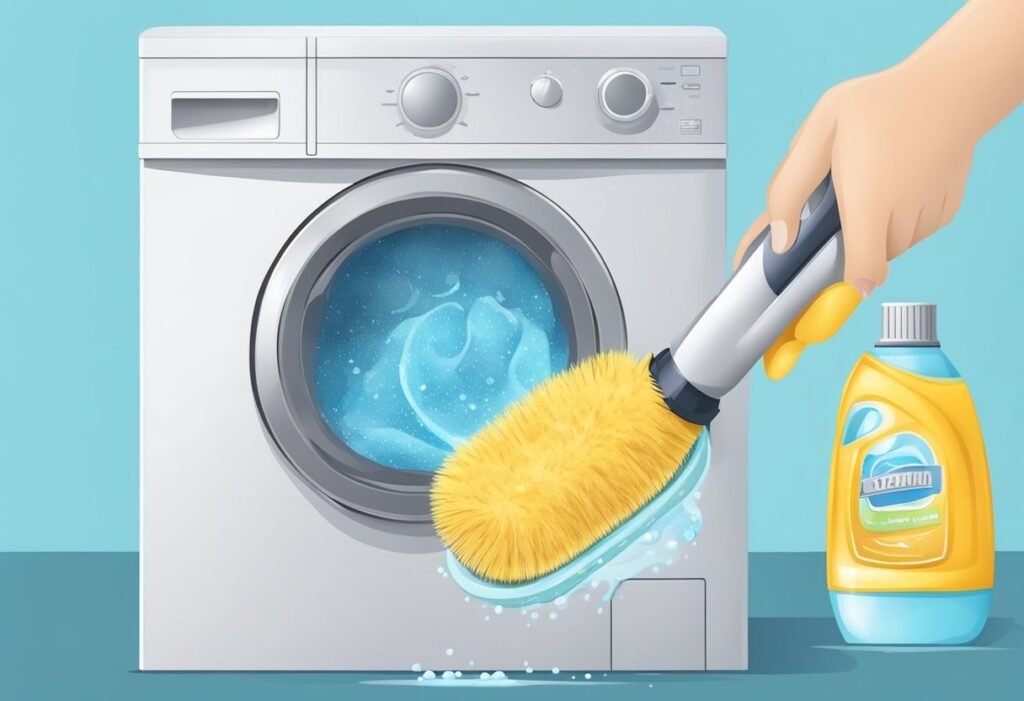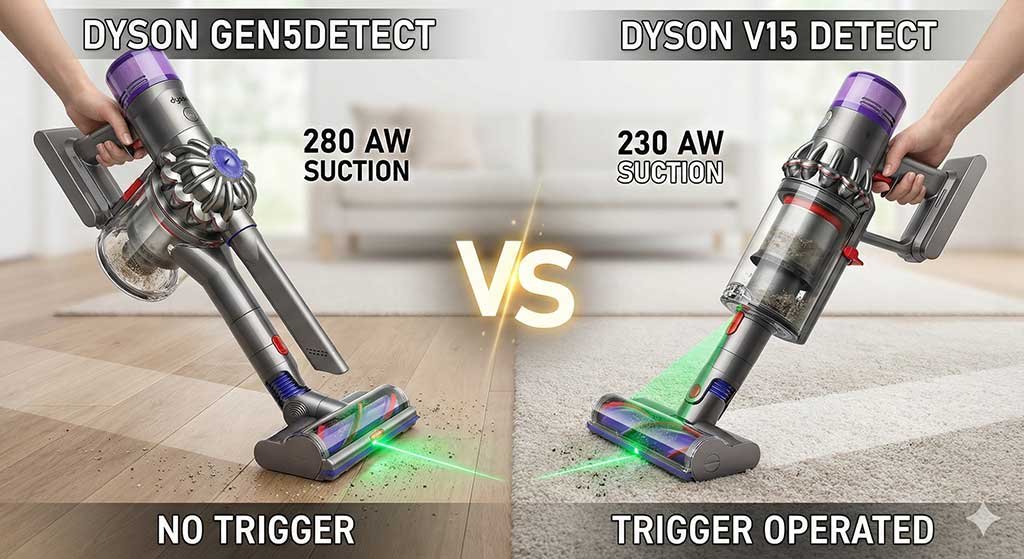To remove mold from your washing machine’s rubber seal, create a mixture of equal parts white vinegar and water. Dip a toothbrush in the solution, scrub the seal, and wipe away mold. Leave the door open between washes to prevent future growth.
If you own a washing machine, you may have noticed that mold can grow on the rubber seal over time. This can be a frustrating problem, as mold can cause unpleasant odors and even health issues if left untreated. But how to remove mold from rubber seal on washing machine? Fortunately, there are several methods you can use to remove mold from the rubber seal on your washing machine.
One effective method is to use a specialized mildew remover. These products are specifically designed to eliminate mold and mildew and can be found at most home improvement stores. Another option is to use a natural solution of vinegar and water.
Simply mix equal parts of white vinegar and water in a spray bottle, and spray the solution onto the affected areas of the rubber seal. Let it sit for a few minutes, then wipe away the mold with a clean cloth.
Another effective method is to run a sanitizing cycle on your washing machine. This will help to kill any remaining mold spores and prevent future growth. To do this, simply add a cup of bleach to your washing machine and run it on the hottest cycle. Be sure to open the windows and doors while the machine is running to ventilate the area.

Table of Contents
How Mold Grows On Washing Machine Seals
If you’ve noticed black or green stains on the rubber seal of your washing machine, you likely have mold growing on it. Mold thrives in damp and warm environments, making washing machine seals a perfect breeding ground.
Mold on washing machine seals is not only unsightly but can also cause health problems. Breathing in mold spores can lead to respiratory issues, especially for those with allergies or asthma. Therefore, removing mold from your washing machine seal is essential as soon as possible.
There are several reasons why mold may grow on your washing machine seal. One of the most common causes is leaving the washing machine door closed after a cycle. Trapped moisture can create a perfect environment for mold to grow. Another cause is using too much detergent or fabric softener, which can leave residue on the seal and promote mold growth.
Safety Precautions Before Removing Molds

When dealing with mold on your washing machine’s rubber seal, it’s important to take safety precautions to avoid any chemical contact with your skin or eyes. Here are some safety tips to keep in mind:
Wear Protective Gear
Always wear protective gloves and safety glasses when working with cleaning agents. This will protect your skin and eyes from any potential chemical contact.
Ventilate the Area
Make sure the area where you’re cleaning the rubber seal is well-ventilated. Open windows and doors to allow fresh air to circulate. This will prevent any dangerous fumes from building up in the room.
Use Non-Toxic Cleaners When Possible
Whenever possible, use non-toxic cleaners to remove mold from your washing machine’s rubber seal. This will reduce the risk of harmful chemical exposure. You can use natural cleaners like vinegar, baking soda, or lemon juice to effectively remove mold and mildew. If you need a stronger cleaner, look for commercial mildew removers that are labeled as non-toxic.
Initial Mold Cleaning Steps
When it comes to removing mold from the rubber seal on your washing machine, there are a few initial cleaning steps that you should take. These steps will help to prepare the seal for a more thorough cleaning and ensure that you can remove as much mold as possible.
Gather Necessary Supplies
Before you begin cleaning, you will need to gather the necessary supplies. You will need a few basic cleaning supplies, including rubber gloves, a clean cloth or sponge, and a cleaning solution. You can choose to use a commercial cleaning product or make your cleaning solution using household items such as vinegar or baking soda.
Wipe Down the Seal
The first step in cleaning the rubber seal is to wipe it down with a clean cloth or sponge. This will help to remove any loose dirt or debris that may be present on the seal. Be sure to pay special attention to the areas where mold is most likely to grow, such as the folds and creases in the seal.
Prepare Cleaning Solution
Once you have wiped down the seal, it’s time to prepare your cleaning solution. If you are using a commercial cleaning product, be sure to follow the instructions on the label carefully. If you are making your cleaning solution, you can use a mixture of vinegar and water or baking soda and water.
To make a vinegar and water solution, mix equal parts white vinegar and water in a spray bottle. To make a baking soda and water paste, mix one part baking soda with two parts water until a thick paste forms. Apply the cleaning solution to the seal and let it sit for a few minutes before wiping it away with a clean cloth or sponge.
Deep Cleaning Process
To remove mold from the rubber seal on your washing machine, you’ll need to follow a deep cleaning process. This process involves several steps that will help you get rid of the mold and prevent it from coming back. Here are the steps you should follow:

Apply Cleaning Solution
First, you’ll need to apply a cleaning solution to the rubber seal. You can use a mixture of bleach and water, or a natural solution like white vinegar. Mix one cup of bleach with one gallon of water or use a 50/50 mixture of white vinegar and water. Apply the solution to the seal using a spray bottle or a cloth.
Scrub the Seal
Next, you’ll need to scrub the seal with a soft-bristled brush. This will help to remove any mold or mildew that has built up on the surface. Be sure to scrub all areas of the seal, including the folds and crevices.
Let the Solution Sit
After scrubbing the seal, let the cleaning solution sit for at least 10 minutes. This will allow the solution to penetrate the mold and kill it at the root. If you’re using bleach, be sure to wear gloves and avoid getting the solution on your skin or clothing.
Rinse Thoroughly
Finally, rinse the rubber seal thoroughly with clean water. Be sure to remove all traces of the cleaning solution, as any residue left behind can cause skin irritation or damage to your clothes. Once you’ve rinsed the seal, wipe it dry with a clean cloth.
By following these steps, you can effectively remove mold from the rubber seal on your washing machine. Remember to clean the seal regularly to prevent mold from returning.
How To Prevent Mold Regrowth
Mold can be a persistent problem, especially in moist environments such as a washing machine. Here are some tips to prevent mold from regrowing on the rubber seal of your washing machine.
Dry the Seal After Use
After each use, wipe down the rubber seal with a dry cloth to remove any remaining moisture. This will help prevent mold from growing on the seal. Make sure to dry the seal thoroughly, including the folds and crevices.
Leave the Door Open
Leaving the door of your washing machine open after each use can help air out the interior and prevent moisture buildup. This will help prevent mold from growing on the rubber seal. If you have pets or small children, make sure to keep the door closed for safety reasons.
Regular Maintenance
Performing regular maintenance on your washing machine can help prevent mold growth. This includes cleaning the detergent dispenser and filter and running a cleaning cycle with vinegar or bleach. Follow the manufacturer’s instructions for maintenance and cleaning.
By following these simple steps, you can prevent mold from regrowing on the rubber seal of your washing machine. Regular maintenance and proper care can help keep your washing machine clean and mold-free.
When to Seek Professional Help
In most cases, removing mold from the rubber seal on your washing machine is a DIY task that you can perform yourself. However, there are times when you may need to seek professional help. Here are some situations where it may be best to call in the experts:
- Severe Mold Infestation: If you notice a large amount of mold on your washing machine’s rubber seal and it has spread to other parts of the machine, it may be best to call in a professional to handle the situation. They have the necessary equipment and expertise to remove the mold safely and effectively.
- Allergic Reactions: If you or someone in your household is experiencing allergic reactions such as coughing, sneezing, or skin irritation, it may be a sign that the mold infestation is severe. In this case, it is best to seek professional help to remove the mold and prevent further health risks.
- Persistent Mold Growth: If you have tried to remove the mold from your washing machine’s rubber seal but it keeps coming back, it may be a sign of a deeper problem. A professional can help you identify the root cause of mold growth and take steps to prevent it from recurring.
Remember that mold can harm your health, especially if you have allergies or respiratory problems. If you are unsure about how to remove mold from your washing machine’s rubber seal or if you have any concerns about the safety of the process, it is best to seek professional help.
FAQ
What are the steps to deep clean a washing machine rubber seal?
To deep clean a washing machine rubber seal, you should first remove any visible mold using a soft cloth or brush. Then, mix a solution of water and either bleach or white vinegar. Use a soft cloth or brush to apply the solution to the rubber seal and let it sit for a few minutes. Finally, rinse the seal thoroughly with clean water and dry it with a towel.
Which household products effectively remove mold from rubber seals?
White vinegar, baking soda, and bleach are all household products that can effectively remove mold from rubber seals. Vinegar is a natural disinfectant and can kill most types of mold. Baking soda is a mild abrasive that can help scrub away mold and stains. Bleach is a strong disinfectant that can kill even stubborn mold.
Can vinegar be used to clean mold off the washing machine rubber seal?
Yes, vinegar can be used to clean mold off the washing machine rubber seal. Vinegar is a natural disinfectant and can kill most types of mold. To use vinegar, mix equal parts water and vinegar in a spray bottle. Spray the solution onto the rubber seal and let it sit for a few minutes. Then, use a soft cloth or brush to scrub away the mold. Finally, rinse the seal thoroughly with clean water and dry it with a towel.
What commercial products are recommended for removing mold from rubber seals in washing machines?
Several commercial products are recommended for removing mold from rubber seals in washing machines. Some popular options include Affresh Washer Cleaner, Tide Washing Machine Cleaner, and Clorox Washing Machine Cleaner. Be sure to follow the instructions on the product label carefully, and always wear gloves and protective eyewear when using these products.
How can stubborn mold be removed from the rubber seal of a front load washer?
If stubborn mold remains on the rubber seal of a front load washer, you can try using a stronger cleaning solution. Mix a solution of one part bleach and four parts water, and apply it to the rubber seal with a soft cloth or brush. Let the solution sit for a few minutes, then rinse the seal thoroughly with clean water and dry it with a towel. Be sure to wear gloves and protective eyewear when using bleach.
What are some preventive measures to avoid mold growth in washing machine seals?
To avoid mold growth in washing machine seals, it’s important to keep the seal clean and dry. After each use, wipe down the seal with a dry cloth to remove any moisture. You can also leave the washing machine door between uses to allow air to circulate and help dry out the seal. Additionally, you should run a cleaning cycle with a washing machine cleaner at least once a month to help prevent mold growth.



